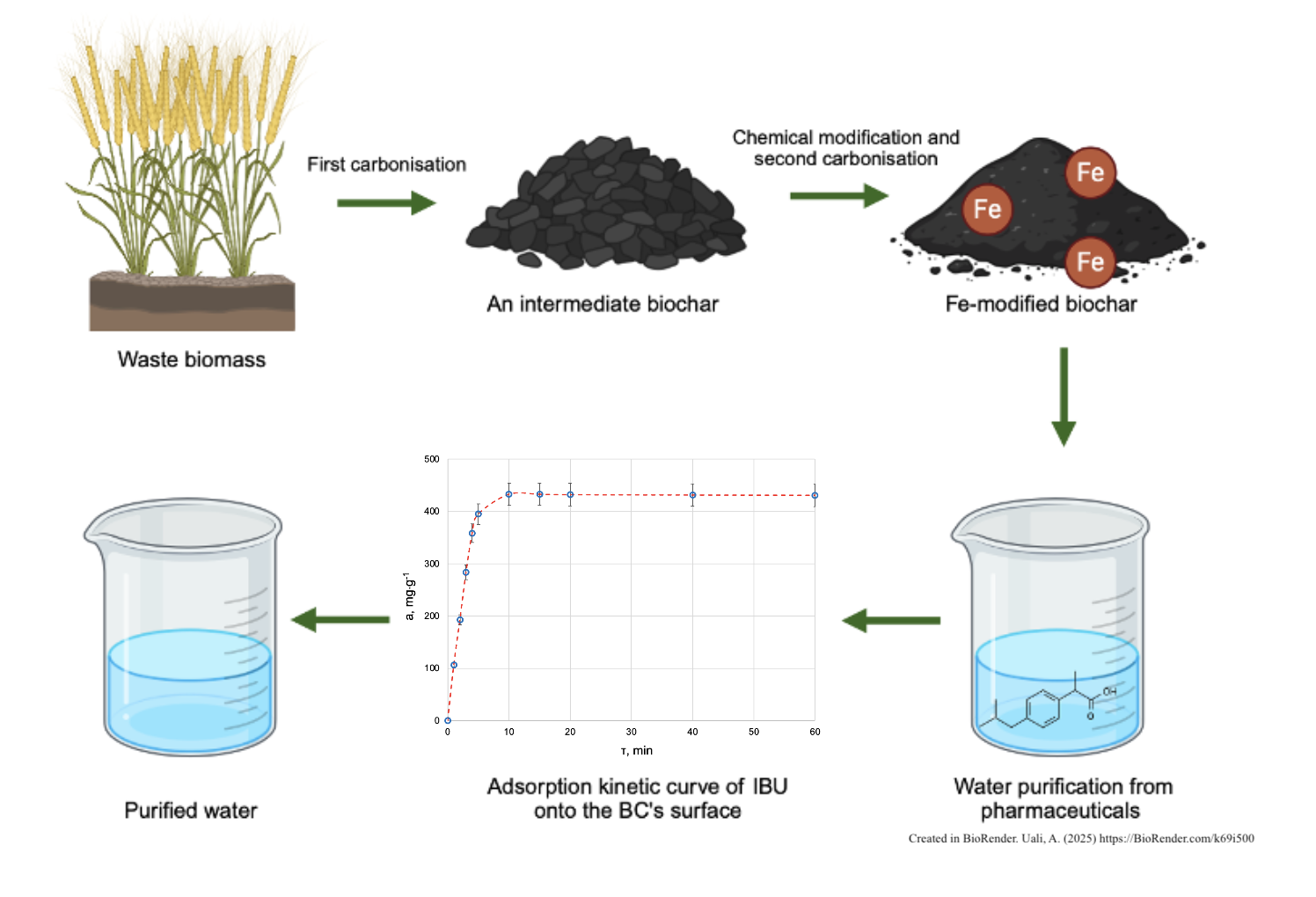Development of Novel Wheat Waste-Derived Biochar and Its Potential in Pharmaceutical Wastewater Treatment
DOI:
https://doi.org/10.31489/2959-0663/1-25-2Keywords:
waste wheat, carbonization, biochar, activated carbons, iron oxides, adsorption, ibuprofen, kinetic models, pseudo-second-order kinetic modelAbstract
The rising concentration of pharmaceuticals in wastewater presents significant environmental and health challenges. This study aims to develop an iron (III)-activated carbon-enriched material derived from local agricultural plant waste to effectively remove pharmaceutical contaminants. The research investigates the material’s composition, structure, morphology, and adsorption capacity of the material, focusing on wheat waste-derived biochar. The synthesis process includes an initial carbonization, chemical modification with FeCl3 using the wet impregnation method, and a second carbonization and washing step. The resulting carbonaceous material was characterized using the CHNS elemental analyzer, FTIR, XRD and SEM-EDX spectroscopic techniques. The results indicate the formation of a carbonaceous material with a carbon content of 77.09 %, enriched with a highly crystalline graphite phase and a porous structure containing iron (II, III) oxides. Notably, this sorbent efficiently reduced the ibuprofen concentration, with a sorption capacity of 433 mg•g⁻¹. Among the pseudo-first-order (PFO), pseudo-second-order (PSO), intraparticle diffusion and Elovich models used to describe the adsorption kinetics, the PSO model (types 1-2) fits successfully, indicating chemisorption-controlled kinetics. This study highlights the potential for converting agricultural waste into a carbonaceous material with improved structure and morphology, and demonstrates its high efficacy in purifying water from pharmaceutical contaminants.

Downloads
Additional Files
Published
How to Cite
Issue
Section
License
Copyright (c) 2024 Ayazhan M. Turarbek, Farida Zh. Abilkanova, Aitolkyn S. Uali

This work is licensed under a Creative Commons Attribution-NonCommercial-NoDerivatives 4.0 International License.
This work is licensed under a Creative Commons Attribution-NonCommercial-NoDerivatives 4.0 International License.
Authors retain copyright and grant the journal right of first publication with the work simultaneously licensed under a Creative Commons Attribution License (CC BY-NC-ND 4.0) that allows others to share the work with an acknowledgement of the work's authorship and initial publication in this journal.



